Walnut trees are not only celebrated for their delicious nuts but also for their stunning beauty and diverse characteristics. With numerous species cultivated across the globe, these trees offer a variety of options for gardeners and landscape enthusiasts alike. In this article, we will explore 19 types of walnut trees, complete with pictures and identification tips to help you distinguish between the different varieties.
Whether you’re looking to enhance your garden with a majestic shade tree or seeking to cultivate walnuts for their culinary uses, this comprehensive guide will provide you with valuable insights into the fascinating world of walnut trees. Join us as we delve into the unique features and benefits of each type, helping you choose the perfect walnut tree for your landscape or orchard.
Different Types of Walnut Trees
Butternut Walnut Tree
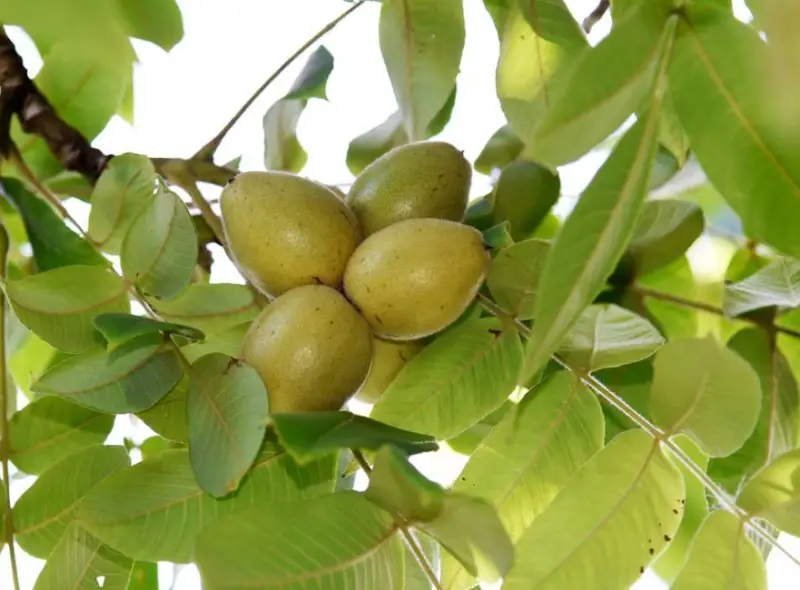
The Butternut Walnut Tree (Juglans cinerea), also known as the White Walnut, is a cherished species native to North America, known for its distinctive, tropical-like appearance and the rich, buttery flavor of its nuts. This slow-growing tree thrives in rich, well-drained soil and full sunlight, making it a great choice for landscapes with ample space and light. An advantage of the Butternut Walnut is its self-fertility, meaning it does not require pollinators to produce nuts.
Reaching heights of 40 to 60 feet with a spread of 30 to 50 feet, the Butternut Walnut Tree is not only admired for its beauty but also for its longevity, often living for over 70 years. Its pinnate leaves typically have 10 to 17 leaflets, feathery appearance. The nuts, prized for their buttery flavor, are a favorite among wildlife and humans alike, adding both ecological and culinary value to this attractive tree.
Black Walnut Tree
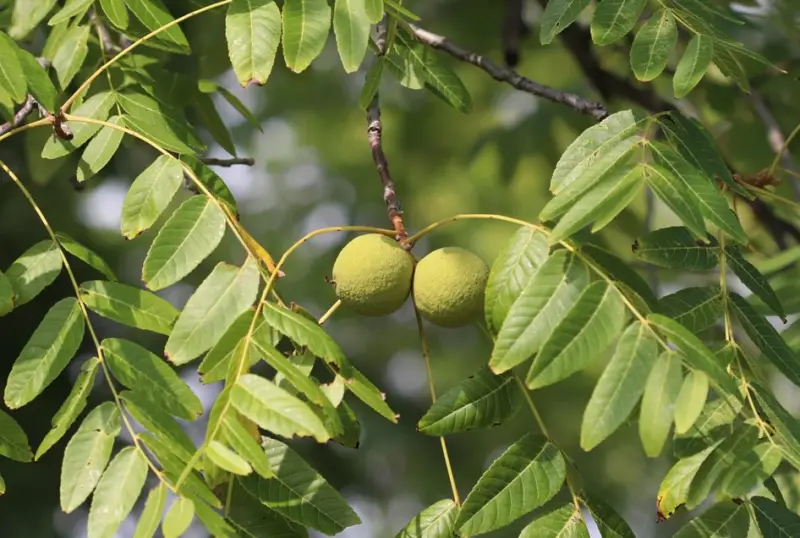
The Black Walnut Tree (Juglans nigra) is a majestic hardwood tree native to North America, highly valued for its deep, dark, and fine-grained timber, as well as its nutritious, flavorful nuts. It is a large tree, often reaching heights of over 60 feet, with a broad canopy that can span between 50 and 80 feet in width. However, caution is advised when planting Black Walnut Trees near other plants, as they produce a chemical called juglone, which can be toxic to many species of vegetation, inhibiting their growth.
In the fall, the tree’s foliage transitions to a striking yellow before shedding. Its nuts, encased in thick, green husks, ripen around October and must be harvested promptly to avoid mold, as the husks begin to break down and can spoil the nuts if left too long on the ground. Despite this, the Black Walnut Tree remains a valuable asset for both its wood and nuts, making it a prized species in both forestry and culinary contexts.
Japanese Walnut Tree
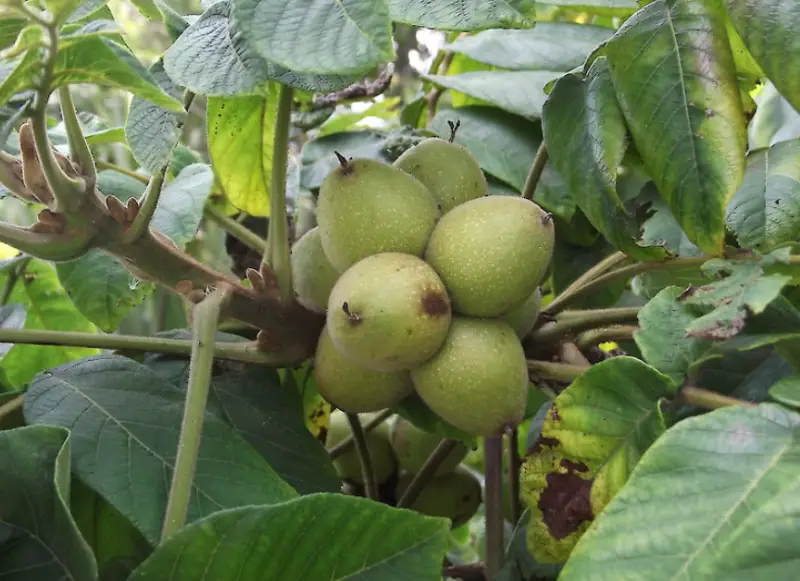
The Japanese Walnut Tree (Juglans ailantifolia) is a broad-crowned, deciduous tree native to Japan. It thrives in full sunlight and adapts well to a variety of soil types, making it a versatile choice for different landscapes. The Japanese Walnut Tree has excellent resistance to weather fluctuations, allowing it to withstand diverse climatic conditions. This tree can reach up to 65 feet in height and has a lifespan of over 50 years.
Its long, broad leaves typically feature more than 11 leaflets, giving the tree a lush appearance. The Japanese Walnut Tree produces clusters of nuts encased in green husks before ripening. These oily nuts are not only flavorful but are also packed with health benefits, making them highly valued. With its adaptability, hardiness, and nutritious nuts, the Japanese Walnut is a popular choice in both gardens and orchards.
Little Walnut Tree
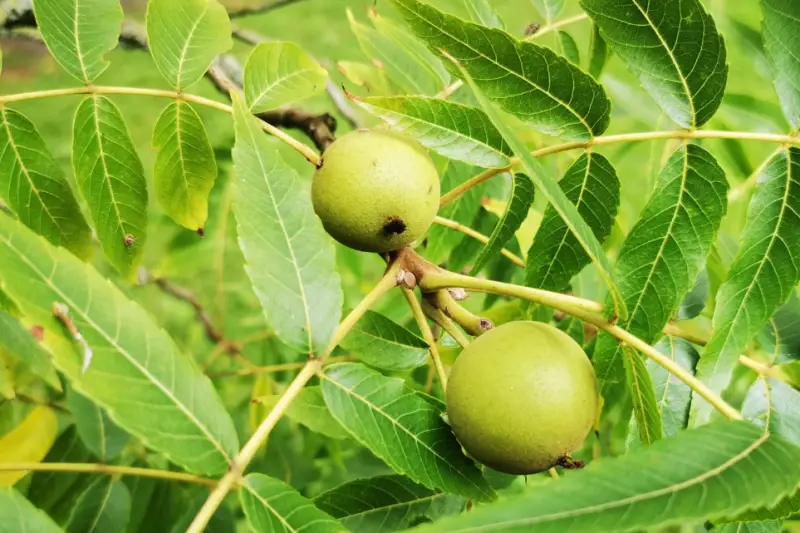
The Little Walnut Tree (Juglans microcarpa), commonly known as the Texas Walnut Tree, is a small walnut species that typically reaches heights of only 10 to 30 feet. This tree is characterized by its round crown and smooth branches, giving it a charming, compact appearance. It blooms in the spring, from March to April, producing attractive foliage and small edible nuts.
The Little Walnut thrives in partial shade and prefers dry soil conditions, making it well-suited for arid regions. Notably, it has a remarkable ability to tolerate both heat and cold, adapting to various climates with ease. The tree’s small, flavorful nuts attract a variety of wildlife, including squirrels, birds, and other creatures, making it an excellent choice for gardens and natural areas where wildlife appreciation is desired.
Arizona Black Walnut Tree
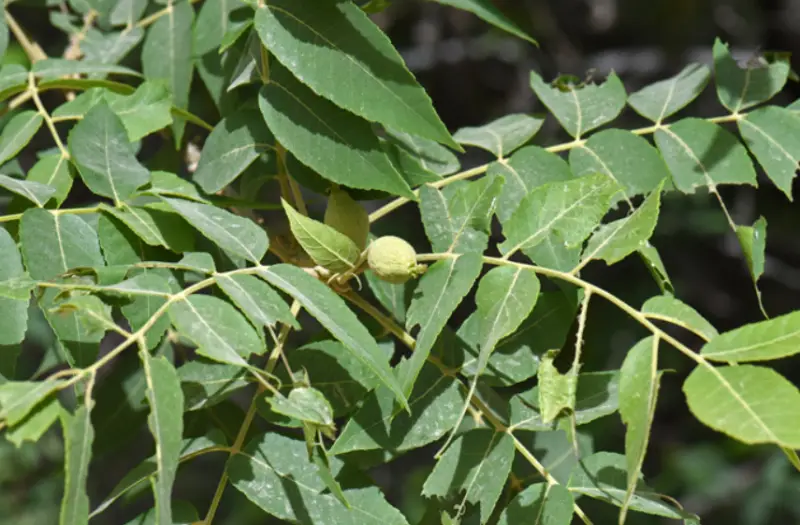
The Arizona Black Walnut Tree (Juglans major), also known as the River Walnut, is a medium-sized walnut tree native to the southwestern United States. It typically grows up to 50 feet tall and has a rounded crown, with dark-gray bark that adds a distinctive texture to its appearance. The tree features long, pinnate leaves and grayish twigs. Its fruits, small nuts about 1 inch in diameter, are borne in clusters, and the tree’s flowering season extends from April to May.
The Arizona Black Walnut thrives in moist, well-drained soils, often found near riverbanks or streams, and is known for being relatively low-maintenance compared to other walnut species. Its ability to withstand the arid climate of the Southwest while requiring minimal care makes it a resilient and attractive option for landscaping in these regions.
Northern California Black Walnut Tree
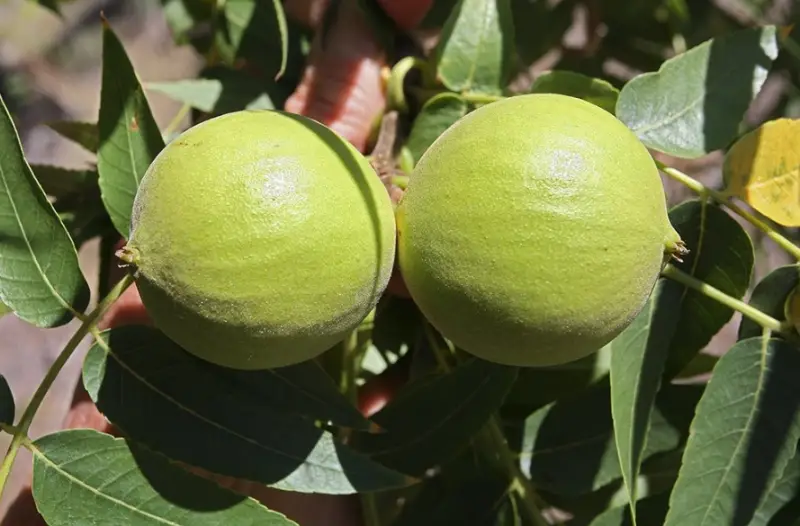
The Northern California Black Walnut Tree (Juglans hindsii), also known as Hindu’s Black Walnut, is a walnut species native to the western regions of the United States, particularly common in Oregon and California. This large, stately tree can grow to heights exceeding 60 feet, with a straight single trunk and branches that often don’t appear until 10 to 40 feet above the ground. Its leaves are long, reaching up to 1 foot.
The nuts of the Northern California Black Walnut are smooth, encased in thick brown shells, and are valued for their hardiness. This tree is often found in riparian areas, thriving in well-drained soils, and has become a valuable species in restoration projects and as a rootstock for English walnuts in commercial orchards.
Southern California Black Walnut Tree
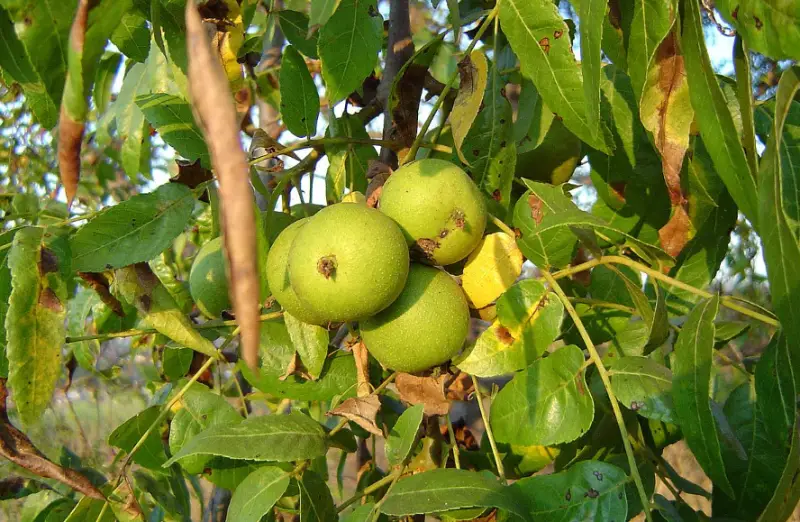
The Southern California Black Walnut Tree (Juglans californica) is a walnut species native to the southern regions of California, often found in foothills and valleys. Unlike its northern counterpart, it is considered a smaller tree or even a large shrub, typically reaching heights of 20 to 40 feet, which is relatively small for walnut species. Despite its size, it shares many similarities with the Northern California Black Walnut, although the two species occupy different ecological zones within the state.
The Southern California Black Walnut thrives in moist, deep soils and is highly adaptable to its surroundings, with its appearance often shaped by the terrain. It can take on a more sprawling form in rugged areas or a more upright shape in sheltered locations. Known for its resilience and ability to live for over 100 years, this species plays an important role in California’s native ecosystems.
Andean Walnut Tree
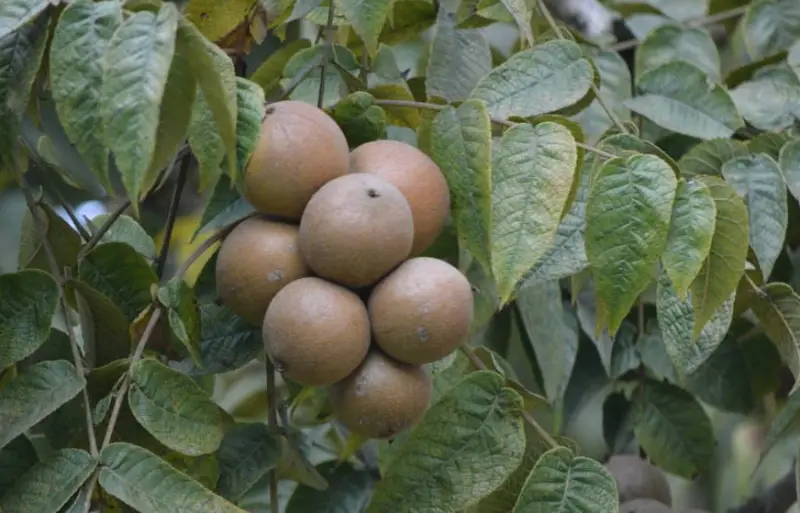
The Andean Walnut Tree (Juglans neotropica), also known as the Colombian Walnut Tree, is a majestic species native to the Andean regions of Colombia, Ecuador, and Peru. Unfortunately, it is considered endangered in many areas due to overharvesting for its highly valued timber and the impact of human activities on its natural habitats. Unlike many other walnut species, the Andean Walnut is fast-growing, making it a potential candidate for reforestation efforts where it remains.
These trees can reach towering heights of up to 80 feet, and they thrive best in full sun and nutrient-rich soils. The Andean Walnut Tree produces distinctive fruits that are green or yellow on the outside, encasing a deep brown or black interior. Despite its endangered status, the tree is prized for its wood and its role in Andean ecosystems, where its rapid growth and towering presence make it a valuable species.
English Walnut Tree
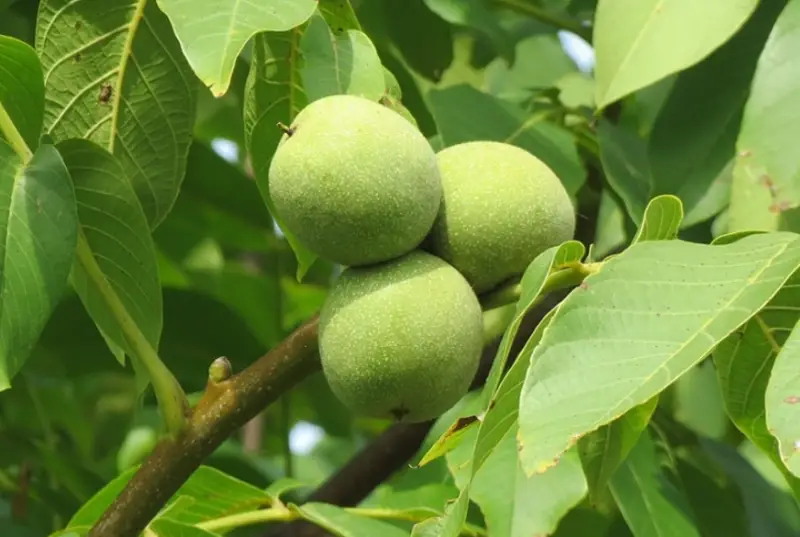
The English Walnut Tree (Juglans regia), native to Europe, is a towering broadleaf species well known for its valuable nuts and high-quality wood. It features shiny, pinnate leaves that can grow up to 16 inches long, typically comprising 5 to 9 leaflets. The English Walnut is among the tallest walnut species, capable of reaching impressive heights of up to 120 feet, with a massive trunk that can exceed 6 feet in diameter.
This walnut tree is prized for its dark, fine-grained wood, often used in paneling, furniture, and woodworking. As a landscape tree, it thrives in full sunlight and prefers acidic, moist soils for optimal growth. The tree produces green fruit, which contains the familiar dark brown walnut inside, making it a favorite for nut production as well as ornamental purposes in large gardens and estates.
Manchurian Walnut Tree
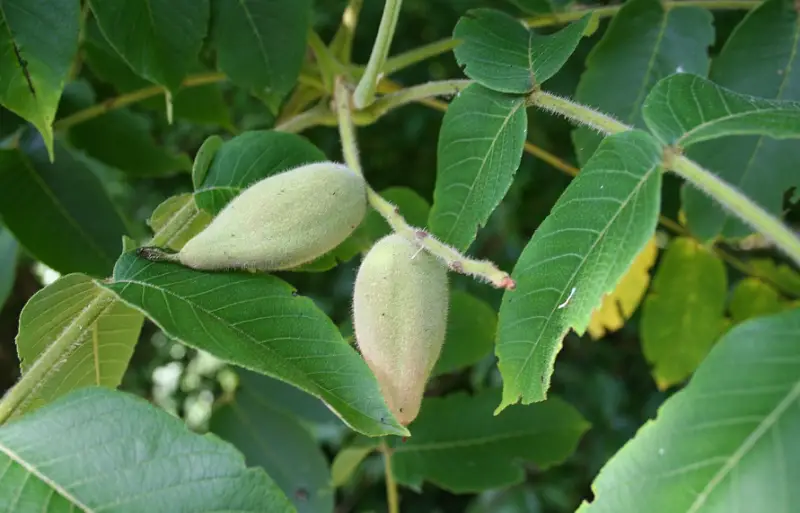
The Manchurian Walnut Tree (Juglans mandshurica) is a striking walnut species native to the Eastern Asiatic region, particularly in parts of China, Korea, and Russia. This tree blossoms in the spring, with its fruits ripening in autumn, producing flavorful but hard-to-crack nuts. It is a fast-growing tree that can reach an impressive mature height of up to 80 feet, making it a prominent feature in landscapes.
Manchurian Walnut Trees are low-maintenance, thriving best in moist, well-drained soils and full sunlight. They require careful planning for placement, as they do not transplant easily and should never be planted in shaded areas. With its tall stature, low upkeep, and valuable nuts, the Manchurian Walnut Tree is a desirable addition to large gardens or natural areas.
Chandler Walnut Tree
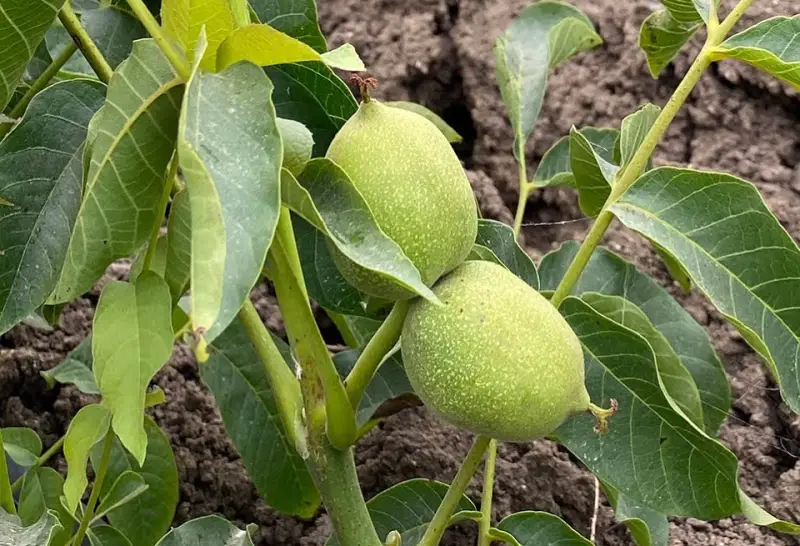
The Chandler Walnut Tree is a highly esteemed walnut variety developed by the University of California and has since become one of the most popular species among walnut growers. Renowned for its exceptional productivity, the Chandler Walnut thrives in moist, well-drained soils, which support its vigorous growth. This tree typically reaches heights of up to 50 feet, though it is often pruned to maintain a more manageable size.
The Chandler Walnut produces large nuts encased in thin shells, making them easy to crack and highly sought after for culinary uses. Notably, this variety is self-pollinating, eliminating the need for additional pollinators to produce a bountiful harvest. With a lifespan that can exceed 100 years, the Chandler Walnut Tree is not only a productive addition to any orchard but also a lasting investment for future generations, enhancing any landscape with its beauty and utility.
Franquette Walnut Tree
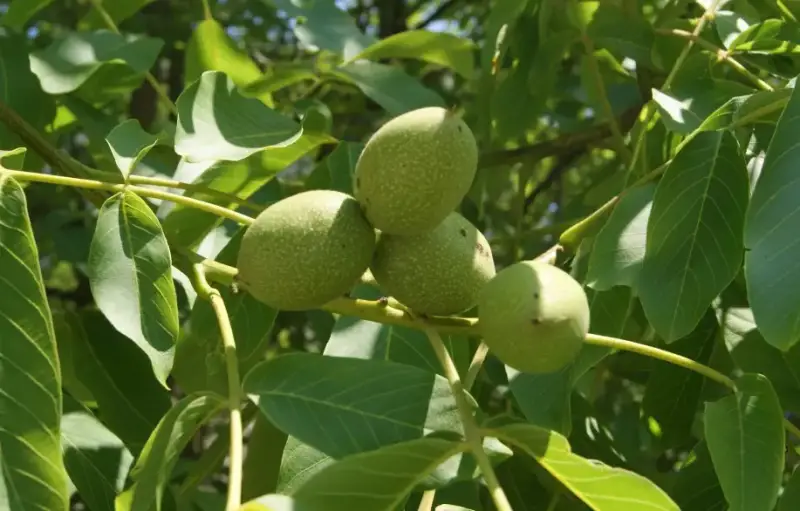
The Franquette Walnut Tree (Juglans regia ‘Franquette’) is a classic walnut variety originating from France, renowned for its high productivity and adaptability. This versatile tree can be cultivated for commercial purposes or simply as an attractive addition to residential landscapes. It is self-fertile, meaning it can produce nuts without the need for cross-pollination, but pairing it with other walnut species can enhance overall yield.
The nuts produced by the Franquette Walnut Tree are distinguished by their brown, thin shells, making them easy to harvest and popular among nut enthusiasts. This tree reaches a mature height of anywhere from 30 to 60 feet, providing ample shade and beauty to any garden. Additionally, it begins bearing fruit within 3 to 5 years of planting, making it a relatively quick producer. With its elegant stature and delicious nuts, the Franquette Walnut Tree is an excellent choice for both commercial orchards and home gardens alike.
Pedro Walnut Tree
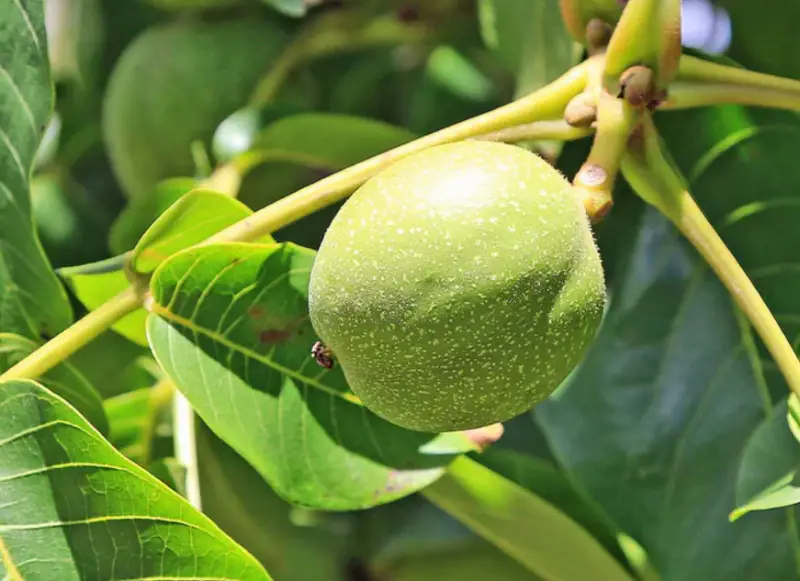
The Pedro Walnut Tree is a compact walnut species, reaching a mature height of only 30 feet, making it an ideal choice for smaller gardens and landscapes. This tree is known for its late blooming and ripening, which can be advantageous in cooler climates. However, it struggles in excessively hot areas and thrives best in full sun for optimal growth.
To flourish, the Pedro Walnut Tree requires approximately 400 chilling hours, making it well-suited for regions with a distinct winter season. The nuts produced by this tree are light green and smooth, and they are often praised for their exceptional flavor, considered among the tastiest when compared to other walnut varieties.
Lara Walnut Tree
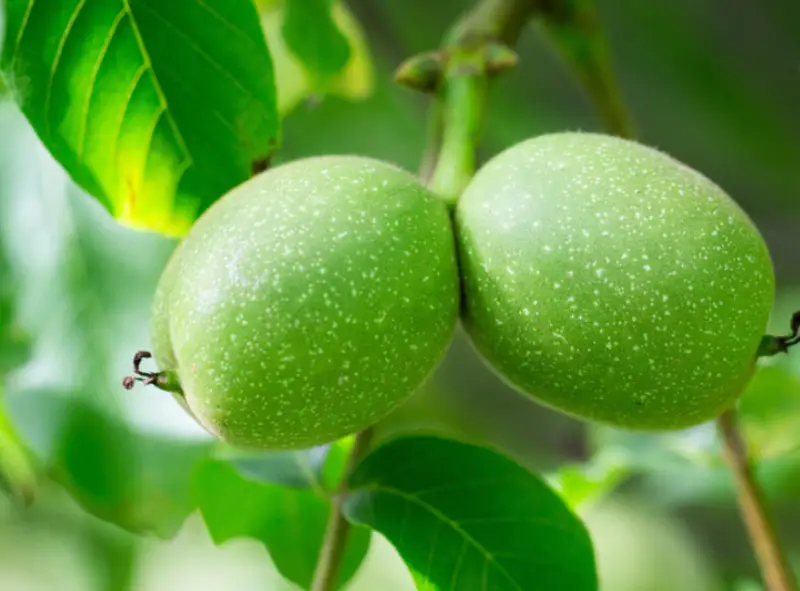
The Lara Walnut Tree is a distinguished variety originating from France, known for its unique spherical crown and early fruit-bearing capabilities. This tree exhibits a high resistance to diseases, making it a low-maintenance option for gardeners and a great fit for a variety of landscapes. When planted in full sun or partial shade—conditions that suit it best—the Lara Walnut Tree can reach heights of 30 to 45 feet.
This variety is partially self-fertile, which means it can produce nuts on its own but benefits from cross-pollination with other walnut varieties for improved yields. The nuts produced are large and feature rough shells, adding to their distinctive character. Harvest season for the Lara Walnut typically begins in late September and extends through late October, providing a generous supply of flavorful nuts.
Hartley Walnut Tree
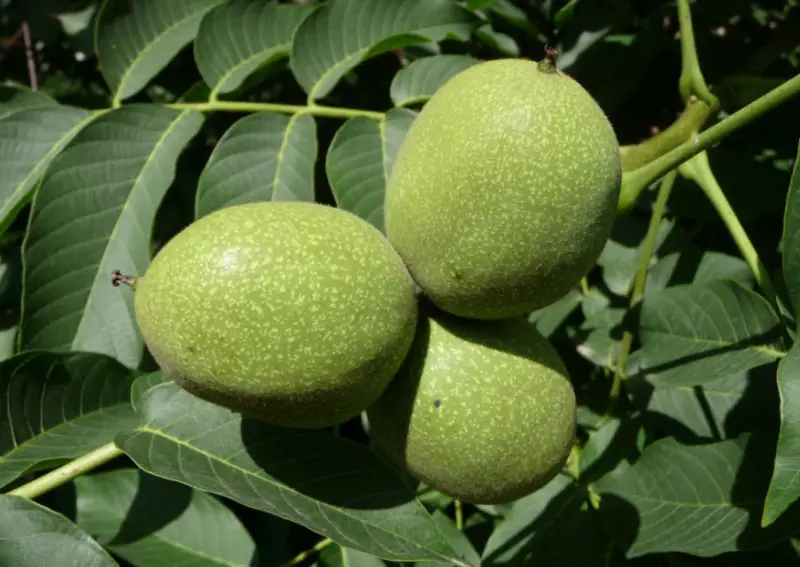
The Hartley Walnut Tree is a notable walnut variety developed by the University of California, recognized for its high-quality nuts and robust growth. As a late bloomer, this tree produces nuts that ripen between October and November, making it a valuable addition to the fall harvest. Unlike some other walnut species, the Hartley requires a pollinator to bear fruit, ensuring that it thrives best when planted alongside compatible walnut varieties.
These trees flourish in full sun and prefer fertile, well-drained soils for optimal growth. The Hartley Walnut typically reaches a mature height of 30 to 60 feet, with a spread of around 20 feet, providing ample shade and beauty to any landscape. Its nuts are pointy, with thin shells that encase nutrient-rich kernels, making them a favorite among consumers. With proper care and maintenance, the Hartley Walnut Tree can live for over 75 years, offering a long-lasting and productive addition to gardens or orchards.
Fernor Walnut Tree
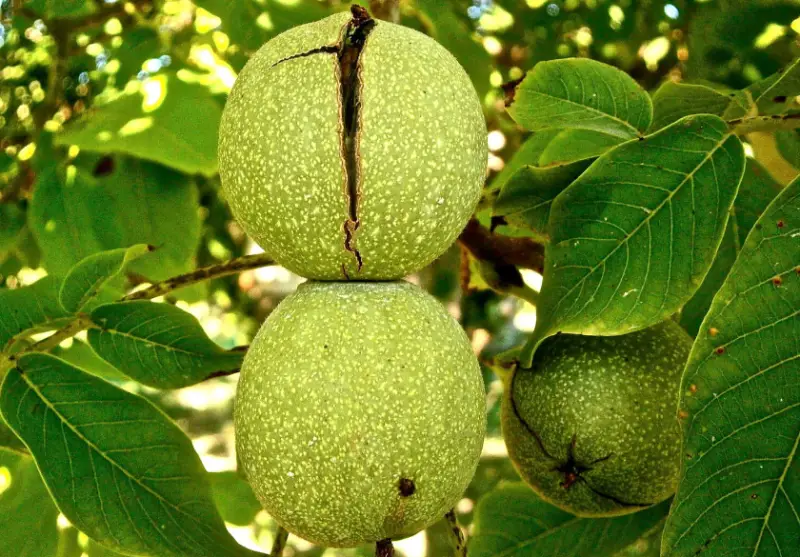
The Fernor Walnut Tree is a distinguished French walnut variety that shares similarities with the Franquette and Chandler walnuts. This adaptable tree can thrive in virtually any soil type, although it performs best in full sun or light shade. The Fernor Walnut Tree is tolerant of blight and cold temperatures, making it a reliable choice for diverse growing conditions. It starts producing nuts relatively early after planting, providing a quick return on investment.
While the Fernor Walnut Tree is self-pollinating, pairing it with another walnut variety can enhance nut production and quality. Notably, it is the only walnut species capable of thriving in high-altitude areas, making it a versatile option for various landscapes. The tree typically reaches heights of up to 30 feet and produces large nuts encased in thin shells. Blooming in the spring, the Fernor Walnut is ready for harvest by September, offering an excellent yield for both home gardeners and commercial growers alike.
Apollo Walnut Tree
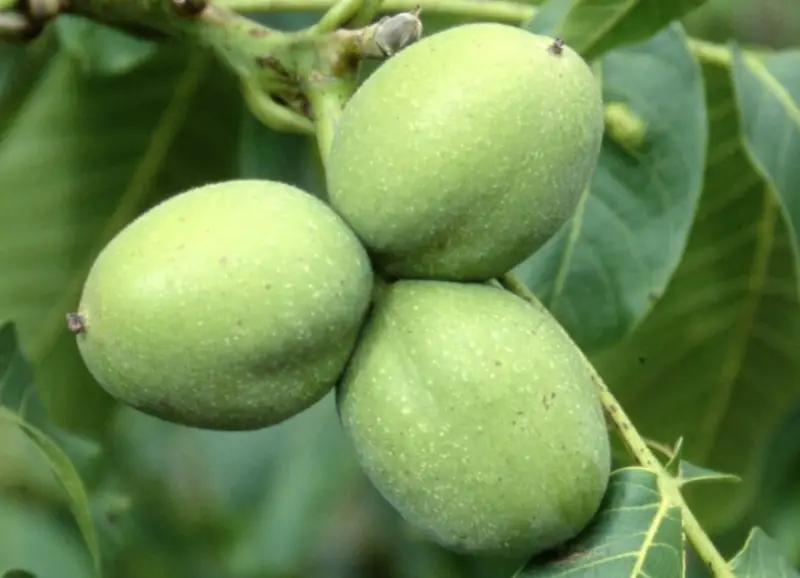
The Apollo Walnut Tree is a remarkable walnut variety discovered in the Czech Republic, known for its impressive stature and lush appearance. This species can grow to heights exceeding 65 feet, featuring a broad, round crown that provides ample shade. Its long, smooth leaves typically consist of 5 to 7 leaflets, contributing to the tree’s graceful silhouette.
The Apollo Walnut thrives best in moist soils and warm climates, making it an excellent choice for regions with favorable growing conditions. Notably, it exhibits exceptional cold resistance, allowing it to withstand extreme temperatures without significant damage. The nuts produced by this tree are distinctively egg-shaped, featuring a small spike at the top, and are valued for their quality. With its combination of beauty and hardiness, the Apollo Walnut Tree is a fantastic addition to any landscape, providing both aesthetic appeal and delicious nuts.






